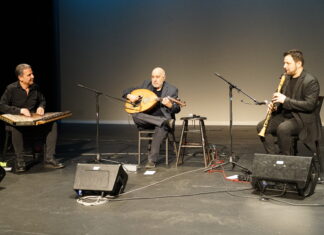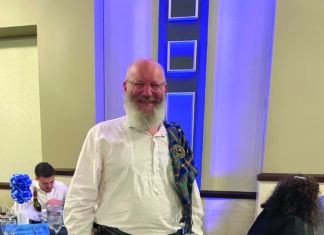By Aram Arkun
Mirror-Spectator Staff
WASHINGTON — The 500th anniversary of Armenian printing this year provides an opportunity to highlight the prominent early role Armenians, who at that time already had lost statehood and had their homeland come under foreign rule, played in the Near East in this field. It also is an opportunity to present some of the fruits of centuries of Armenian literary and cultural work. While the United Nations Educational, Scientific and Cultural Organization (UNESCO) selected Yerevan as this year’s world capital book city, there are exhibitions and conferences taking place throughout the world. In the US, the Library of Congress, thanks to the efforts of curator Dr. Levon Avdoyan and a team of staff members, inaugurated a beautifully designed exhibit on April 19, titled “To Know Wisdom and Instruction: The Armenian Literary Tradition at the Library of Congress.” It will remain on display until September 26 of this year, Monday-Saturday from 8:30 a.m. to 4:30 p.m. There is no charge for access to this exhibit.
The exhibit includes 76 items from as early as the 14th century, and as late as 2010. The early manuscripts on display show that Armenia had a long and illustrious literary tradition which quickly was transformed by the adoption of printing. The exhibit includes the first complete Armenian-language printed bible from Amsterdam (1666), the first modern Armenian novel, the first transcription of the Armenian liturgy with European musical notation in the 19th century, an 18th-century phylactery or prayer scroll and various rare 19th-century publications. Maps, such as one of Yerevan in the early 20th century, sheet music and modern diasporan, Ottoman, Soviet and post-Soviet Armenian books and periodicals show the vitality and range of Armenian printing. Non-printed items such as manuscript illuminations, elaborately embroidered fabrics, musical recordings and photographs highlight the richness and range of the Library of Congress collection. The exhibit is accompanied by a 100-page illustrated catalogue compiled by Avdoyan, available at the library gift shop or at amazon.com.
The exhibition is in a prominent area of the Library of Congress that already is attracting tourists and passers-by. Avdoyan noted that all kinds of people are visiting, and hopefully are being educated. One woman asked, for example, whether Armenia was a country. Of course, many groups of Armenians are also planning visits, and Avdoyan is providing guided tours to those who make arrangements in advance.
The exhibition and catalog, like all others produced by the Library of Congress, were sponsored by outside grants. In this case, Armenian-American foundations were the sponsors, including the Dolores Zohrab Liebmann Fund, the Dadian Fund of the Library of Congress, Roger Strauch and Julie Kulhanjian Strauch, the Vartkess and Rita Balian Family Foundation and the Sami and Annie Totah Family Foundation.
An evening pre-opening reception on April 18 with Dr. Vartan Gregorian, president of the Carnegie Corporation of New York, as keynote speaker attracted approximately 160 people, while another 160 people, coincidentally, attended the next day’s lectures. Dr. Kevork Bardakjian (Marie Manoogian Chair of Armenian Language and Literature at the University of Michigan, Ann Arbor) delivered the 16th annual Vardanants Day Lecture on the Armenian alphabet and literary identity, on April 19, followed by curator Avdoyan’s discussion of the continuity and change of Armenian identity in “the digital age.” A free concert by Armenian cellist Narek Hakhnazaryan (tickets are required through ticketmaster.com) will help celebrate the exhibition and the Armenian cultural heritage on May 19 at 2 p.m.








